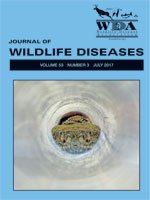Influenza A viruses (IAVs) of the subtypes H13 and H16 are primarily found in gulls (Larus spp., order Charadriiformes). Although the gull-adapted subtypes replicate efficiently during infection, gulls usually remain apparently healthy during infection. Avian influenza virus isolates are generally separated into two distinct populations, North American and Eurasian, because of the limited gene flow between the continents. Reassortment between these lineages does occur occasionally; however, direct intercontinental transmission of all eight gene segments is rare. Extensive research has been done to understand the ecology of IAV subtypes that naturally circulate in ducks (order Anseriformes), but the ecology of H13 and H16 IAVs in gulls remains far less studied. In Finland, gulls were screened for IAVs for passive (dead and diseased gulls) and active (clinically healthy gulls) surveillance purposes during the years 2005–10. During that period, 11 H13, two H16 viruses, and one H3N8 IAV were detected. We sequenced partial and full-length hemagglutinin genes of these gull-origin IAVs for phylogenetic assessments. All but one of the H13 genes clustered together with northern European and northeastern Asian viruses, whereas one virus clustered with North American viruses. Interestingly, a high rate (10/14) of these low-pathogenic IAVs was detected in dead or diseased gulls. The atypical clinical status of the IAV-positive gulls and previous observations of circovirus-like inclusion bodies in diseased gulls during autopsies, led us to screen for concurrent circovirus infections in our samples. The DNA of circovirus, an immunosuppressive pathogen of both birds and mammals, was detected in 54% (7/13) of the tested IAV-positive gulls, whereas only 25% (14/56) of our panel of IAV-negative gulls tested positive by circovirus PCR.
How to translate text using browser tools
1 July 2017
GENETIC CHARACTERIZATION OF H13 AND H16 INFLUENZA A VIRUSES IN GULLS (LARUS SPP.) WITH CLINICALLY SEVERE DISEASE AND CONCURRENT CIRCOVIRUS INFECTION
Erika Lindh,
Christine Ek-Kommonen,
Marja Isomursu,
Jukka Alasaari,
Antti Vaheri,
Olli Vapalahti,
Anita Huovilainen
ACCESS THE FULL ARTICLE

Journal of Wildlife Diseases
Vol. 53 • No. 3
July 2017
Vol. 53 • No. 3
July 2017
Circovirus
gulls
H13
H16
influenza A virus
molecular epidemiology




